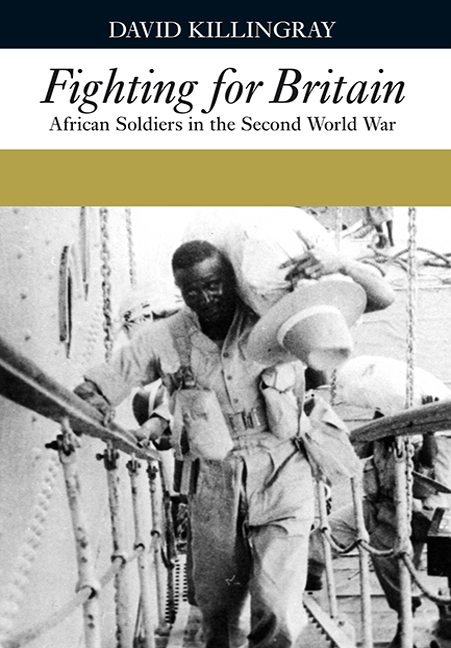Book contents
6 - Going Home & Demobilisation
Published online by Cambridge University Press: 13 April 2017
Summary
I would like to urge our trustees to direct their minds not to a plan for getting rid of the demobilised soldier as quickly as possible, but to the laying of a new foundation for society – now.
Recruiting and mobilising a large army from the African colonies for war was a process spread over several years. Demobilising such a large number of men once the war had finished took nearly two years and presented serious challenges to the military and civilian authorities in London and the colonies. In mid-1945 more than 300,000 African soldiers were serving in southern Europe, North Africa, the Middle East and Asia, as well as in Africa, and they had to be brought home, resettled and reabsorbed back into the civil life of the colonies. There were few precedents that offered practical lessons. The plans formulated in Britain for demobilising the home army were geared to the circumstances of a modern industrial state and the need to return rapidly to a peacetime economy.Such a feeling of urgency did not apply to the officially perceived conditions and needs of colonial Africa in 1945–46. African demobilisation at the end of the First World War had a few helpful local illustrations to offer but not many; on that occasion the number of troops involved was much smaller and soldiers’ origins, experiences and thus expectations were for the most part of a very different kind. The most appropriate body of experience was that of India, which at the end of the First World War had demobilised nearly three million men. By 1942 India had begun drawing up plans for the resettlement of soldiers when the war against the Axis powers was over.
The end of the war in Europe and the Mediterranean in mid-1945 was foreseen, whereas the Japanese surrender came unexpectedly following the dropping of the two atomic bombs in August that year. The main fighting may have ended, but major logistical problems remained for the victors. A large army of labour was needed for clearing up after a long war. Vast supply dumps of war material had to be secured and then disposed of, formerly enemy-held territory reoccupied and prisoners-of-war guarded.
- Type
- Chapter
- Information
- Fighting for BritainAfrican Soldiers in the Second World War, pp. 179 - 202Publisher: Boydell & BrewerPrint publication year: 2010



